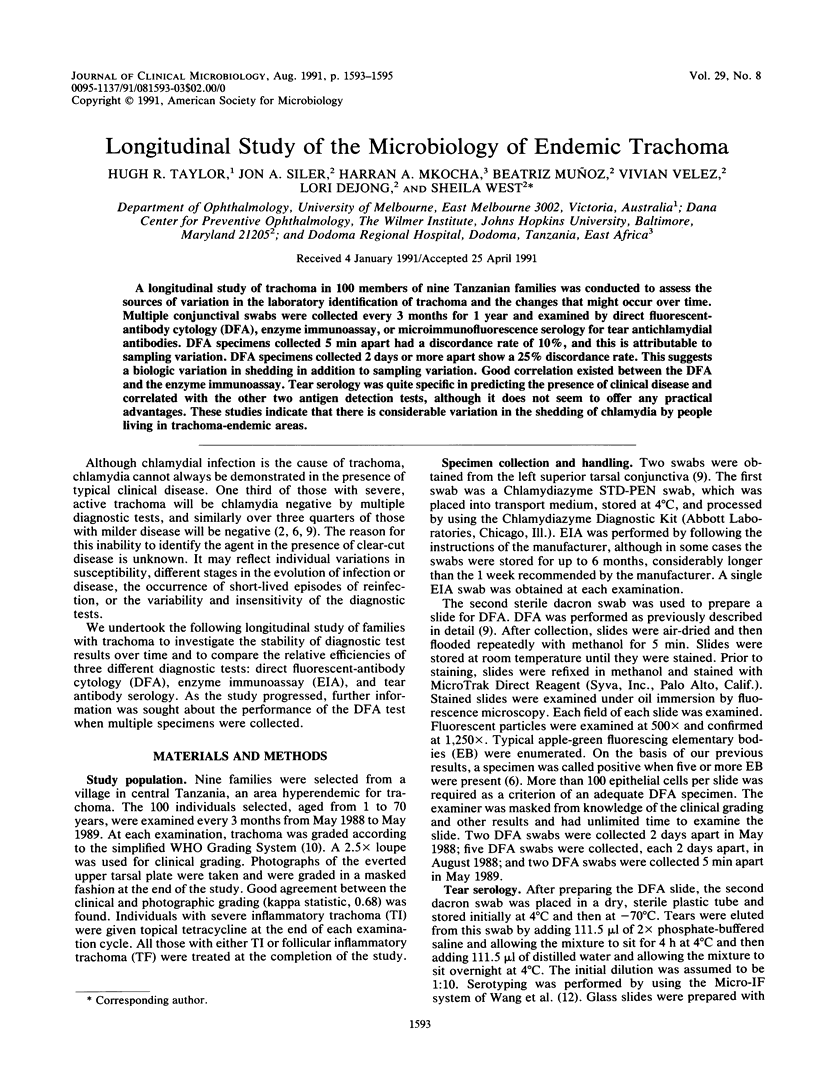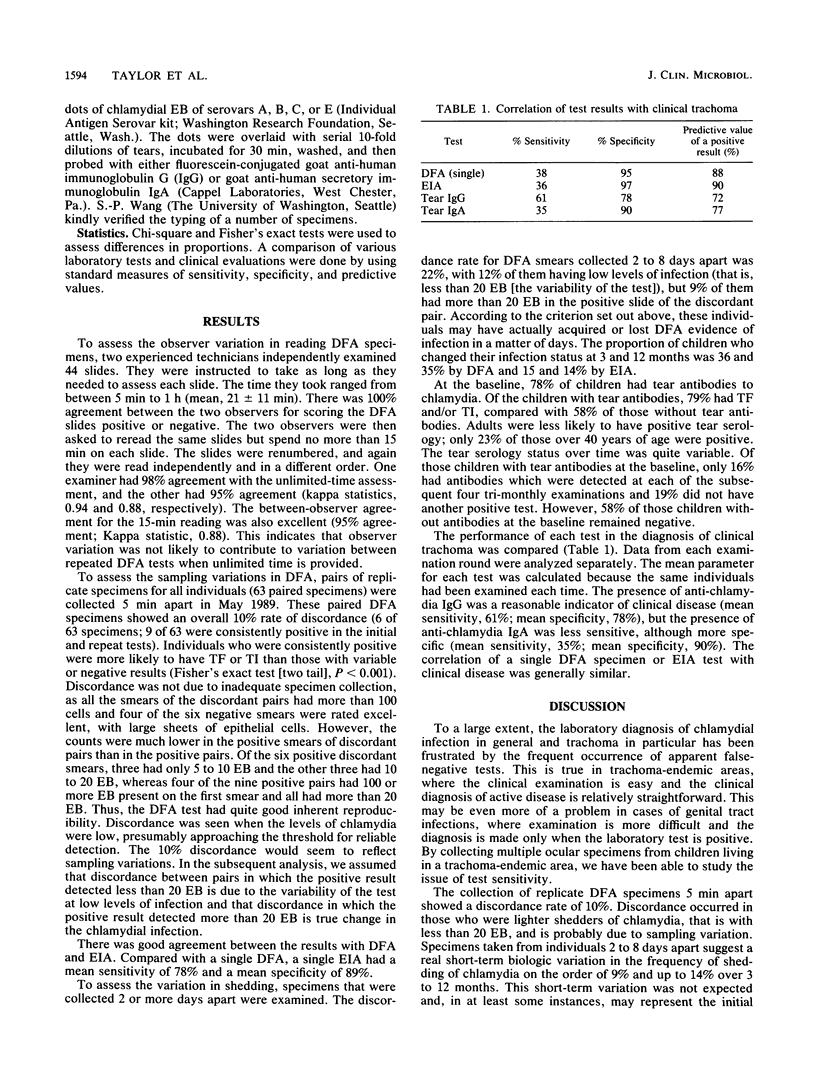Abstract
A longitudinal study of trachoma in 100 members of nine Tanzanian families was conducted to assess the sources of variation in the laboratory identification of trachoma and the changes that might occur over time. Multiple conjunctival swabs were collected every 3 months for 1 year and examined by direct fluorescent-antibody cytology (DFA), enzyme immunoassay, or microimmunofluorescence serology for tear antichlamydial antibodies. DFA specimens collected 5 min apart had a discordance rate of 10% and this is attributable to sampling variation. DFA specimens collected 2 days or more apart show a 25% discordance rate. This suggests a biologic variation in shedding in addition to sampling variation. Good correlation existed between the DFA and the enzyme immunoassay. Tear serology was quite specific in predicting the presence of clinical disease and correlated with the other two antigen detection tests, although it does not seem to offer any practical advantages. These studies indicate that there is considerable variation in the shedding of chlamydia by people living in trachoma-endemic areas.
Full text
PDF


Selected References
These references are in PubMed. This may not be the complete list of references from this article.
- Darougar S. The humoral immune response to chlamydial infection in humans. Rev Infect Dis. 1985 Nov-Dec;7(6):726–730. doi: 10.1093/clinids/7.6.726. [DOI] [PubMed] [Google Scholar]
- Dawson C. R., Daghfous T., Messadi M., Hoshiwara I., Schachter J. Severe endemic trachoma in Tunisia. Br J Ophthalmol. 1976 Apr;60(4):245–252. doi: 10.1136/bjo.60.4.245. [DOI] [PMC free article] [PubMed] [Google Scholar]
- Grayston J. T., Wang S. New knowledge of chlamydiae and the diseases they cause. J Infect Dis. 1975 Jul;132(1):87–105. doi: 10.1093/infdis/132.1.87. [DOI] [PubMed] [Google Scholar]
- Rapoza P. A., Quinn T. C., Kiessling L. A., Green W. R., Taylor H. R. Assessment of neonatal conjunctivitis with a direct immunofluorescent monoclonal antibody stain for Chlamydia. JAMA. 1986 Jun 27;255(24):3369–3373. [PubMed] [Google Scholar]
- Schachter J., Moncada J., Dawson C. R., Sheppard J., Courtright P., Said M. E., Zaki S., Hafez S. F., Lorincz A. Nonculture methods for diagnosing chlamydial infection in patients with trachoma: a clue to the pathogenesis of the disease? J Infect Dis. 1988 Dec;158(6):1347–1352. doi: 10.1093/infdis/158.6.1347. [DOI] [PubMed] [Google Scholar]
- Taylor H. R., Johnson S. L., Prendergast R. A., Schachter J., Dawson C. R., Silverstein A. M. An animal model of trachoma II. The importance of repeated reinfection. Invest Ophthalmol Vis Sci. 1982 Oct;23(4):507–515. [PubMed] [Google Scholar]
- Taylor H. R., Rapoza P. A., West S., Johnson S., Munoz B., Katala S., Mmbaga B. B. The epidemiology of infection in trachoma. Invest Ophthalmol Vis Sci. 1989 Aug;30(8):1823–1833. [PubMed] [Google Scholar]
- Thylefors B., Dawson C. R., Jones B. R., West S. K., Taylor H. R. A simple system for the assessment of trachoma and its complications. Bull World Health Organ. 1987;65(4):477–483. [PMC free article] [PubMed] [Google Scholar]
- Treharne J. D., Dwyer R. S., Darougar S., Jones B. R., Daghfous T. Antichlamydial antibody in tears and sera, and serotypes of Chlamydia trachomatis isolated from schoolchildren in Southern Tunisia. Br J Ophthalmol. 1978 Aug;62(8):509–515. doi: 10.1136/bjo.62.8.509. [DOI] [PMC free article] [PubMed] [Google Scholar]


